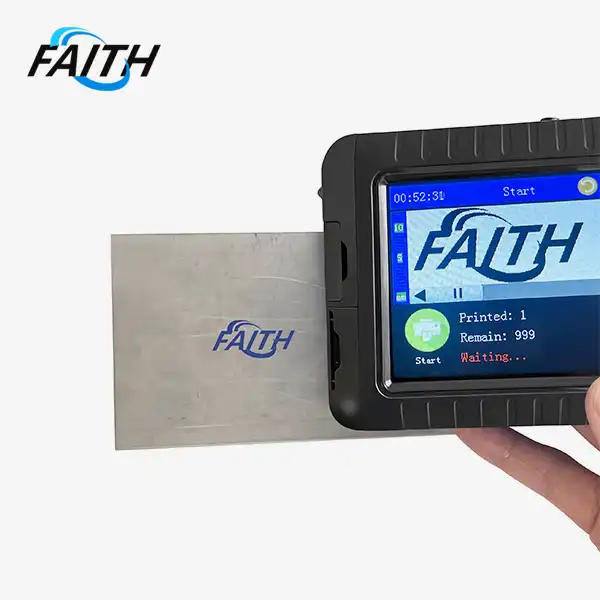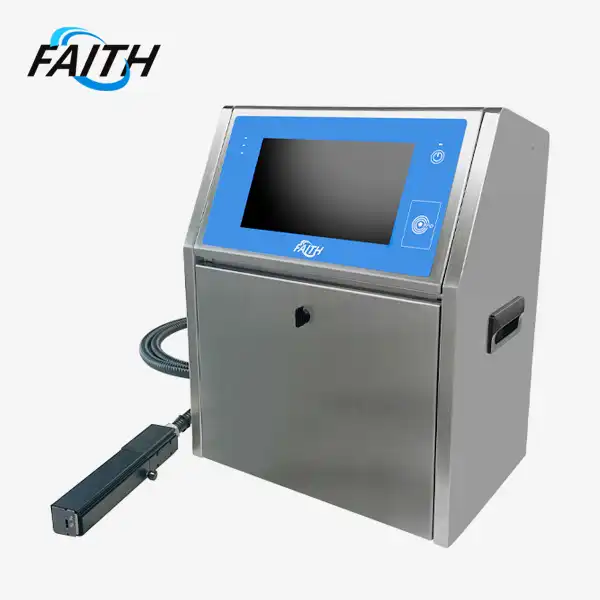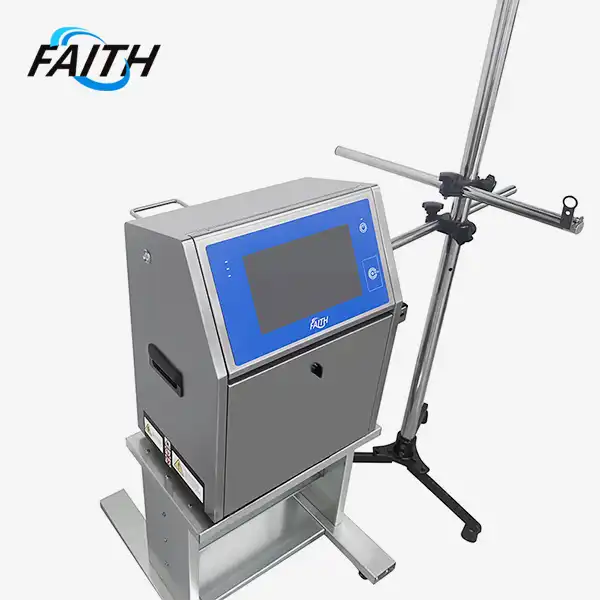Industrial CIJ Printing Systems: Precision in Harsh Environments
Industrial Continuous Inkjet (CIJ) printing systems have revolutionized coding and marking in challenging manufacturing environments. These robust machines excel in harsh conditions, delivering high-speed, precise printing on diverse surfaces. From food and beverage to automotive and pharmaceutical industries, CIJ printers have become indispensable for their reliability, versatility, and ability to maintain top performance under demanding circumstances. This article delves into the world of industrial CIJ printing systems, exploring their features, applications, and the cutting-edge technology that makes them invaluable in modern production lines.
The Evolution of Industrial CIJ Printing Technology
The journey of industrial CIJ printing systems is a testament to human ingenuity and technological progress. These systems have come a long way since their inception, evolving to meet the ever-growing demands of various industries.
From Humble Beginnings to Industry Standard
The roots of CIJ technology can be traced back to the 1960s when it was first developed for recording electronic signals. However, it wasn't until the 1970s that this technology found its way into industrial applications. Early CIJ printers were bulky, prone to clogging, and limited in their capabilities. Despite these challenges, manufacturers recognized the potential of this technology for high-speed, non-contact printing.
As years passed, significant advancements were made in ink formulations, printhead design, and electronic controls. These improvements led to more reliable and versatile CIJ printers capable of operating in diverse industrial environments. By the 1990s, CIJ printing had become the go-to solution for many manufacturers requiring fast, efficient, and adaptable coding systems.
Technological Breakthroughs in Modern CIJ Systems
Today's industrial CIJ printing systems are marvels of engineering. They incorporate sophisticated technologies that were unimaginable just a few decades ago. For instance, modern CIJ printers use advanced microprocessors and software algorithms to control ink droplet formation with unprecedented precision. This allows for high-resolution printing at speeds that can exceed 500 meters per minute.
Another significant advancement is the development of smart nozzle systems. These systems can self-monitor and automatically clean the printhead, dramatically reducing maintenance downtime. Additionally, improvements in ink chemistry have led to formulations that adhere to a wider range of substrates and withstand extreme temperatures, chemicals, and abrasion.
The Rise of Industry 4.0 and CIJ Integration
The advent of Industry 4.0 has ushered in a new era for industrial CIJ printing systems. Modern CIJ printers are now equipped with IoT (Internet of Things) capabilities, allowing them to communicate with other devices on the production line and transmit real-time data to central management systems. This integration enables predictive maintenance, remote diagnostics, and seamless coordination with other manufacturing processes.
Furthermore, the incorporation of machine learning algorithms has enhanced the adaptability of CIJ systems. These intelligent printers can now optimize their performance based on environmental conditions and production requirements, ensuring consistent print quality across various scenarios.
Key Features and Benefits of Industrial CIJ Printing Systems
Industrial CIJ printing systems have become the backbone of many production lines due to their unique combination of features and benefits. Let's explore the characteristics that make these systems indispensable in harsh industrial environments.
Unparalleled Speed and Efficiency
One of the most striking features of industrial CIJ printing systems is their ability to operate at remarkably high speeds. Advanced models, like the FBP002, can achieve printing speeds of up to 576 meters per minute. This blazing fast performance ensures that even the most rapid production lines can be accommodated without creating bottlenecks.
The efficiency of CIJ systems extends beyond mere speed. These printers can operate continuously for extended periods, minimizing downtime and maximizing productivity. With features like automatic cleaning systems, CIJ printers maintain their performance over long production runs, reducing the need for frequent maintenance interruptions.
Versatility in Substrate Compatibility
Industrial CIJ printing systems shine when it comes to substrate versatility. They can print on a wide array of materials, including glass, plastic, metal, cardboard, and even porous surfaces. This flexibility makes faith printers ideal for industries with diverse packaging needs.
Moreover, advanced CIJ systems like the FBP002 can handle complex surface geometries. They excel at printing on concave, convex, and uneven surfaces, ensuring clear and legible markings on virtually any product shape. This adaptability eliminates the need for multiple specialized printers, streamlining production processes and reducing equipment costs.
Resilience in Harsh Environments
Perhaps the most crucial aspect of industrial CIJ printing systems is their ability to perform reliably in challenging conditions. These printers are engineered to withstand dust, moisture, extreme temperatures, and vibrations commonly found in industrial settings.
The robust design of CIJ printers includes sealed components and industrial-grade materials that resist corrosion and wear. Additionally, advanced models incorporate features like automatic nozzle cleaning and ink recirculation systems, which prevent clogging and ensure consistent print quality even in dusty or humid environments.
Precision and Consistency
Despite operating at high speeds in challenging conditions, industrial CIJ printing systems maintain remarkable precision. They can produce clear, high-resolution text, barcodes, and other markings with exceptional consistency.
This precision is achieved through a combination of advanced printhead technology and sophisticated electronic controls. Modern CIJ systems use high-frequency piezoelectric crystals to generate uniform ink droplets, while real-time monitoring and adjustment systems ensure optimal print quality throughout production runs.
Low Maintenance and Cost-Effectiveness
Industrial CIJ printing systems are designed for longevity and minimal maintenance. Features like self-cleaning nozzles and filtered ink systems reduce the need for manual intervention, lowering operational costs and minimizing production interruptions.
Furthermore, the non-contact nature of CIJ printing means there's less wear on printheads compared to contact-based marking systems. This, combined with the ability to use low-cost, fast-drying inks, makes CIJ printing a cost-effective solution for high-volume production environments.
Applications Across Industries: CIJ Printing in Action
The versatility and reliability of industrial CIJ printing systems have made them indispensable across a wide range of industries. Let's explore how these systems are applied in various sectors, highlighting their critical role in modern manufacturing processes.
Food and Beverage: Ensuring Safety and Traceability
In the food and beverage industry, CIJ printers play a crucial role in ensuring product safety and traceability. They are used to print best-by dates, batch codes, and other variable data directly onto packaging materials. This information is vital for inventory management, quality control, and compliance with food safety regulations.
CIJ systems excel in this industry due to their ability to print on various packaging materials, including glass bottles, plastic containers, and metal cans. The high-speed printing capabilities of CIJ systems keep pace with rapid bottling and packaging lines, ensuring that every product is properly marked without slowing down production.
Pharmaceuticals: Precision Marking for Regulatory Compliance
The pharmaceutical industry relies heavily on industrial CIJ printing systems for marking medication packaging, vials, and medical devices. These printers are used to apply lot numbers, manufacturing dates, and dosage instructions with the precision and clarity required by stringent regulatory standards.
CIJ printers are particularly valuable in pharmaceutical applications due to their ability to print on small, curved surfaces like vials and ampules. The non-contact nature of CIJ printing also ensures that sterile packaging remains uncompromised during the marking process.
Automotive and Aerospace: Component Tracking and Quality Assurance
In the automotive and aerospace industries, CIJ printing systems are essential for part identification and traceability. They are used to mark components with serial numbers, date codes, and other identifying information. This marking is crucial for quality control, warranty management, and facilitating recalls when necessary.
The durability of CIJ-printed marks is particularly important in these industries, where components may be exposed to harsh conditions, including high temperatures and chemical exposure. Advanced CIJ inks ensure that markings remain legible throughout a product's lifecycle.
Electronics: Micro-Marking for Circuit Boards and Components
The electronics industry leverages CIJ printing for marking circuit boards, cables, and electronic components. These systems can produce extremely fine, high-resolution prints required for marking small electronic parts with serial numbers, barcodes, or other identifying information.
CIJ printers' ability to mark on various materials, including plastics and metals commonly used in electronics manufacturing, makes them versatile tools in this industry. Their non-contact printing method is also advantageous when marking sensitive electronic components that could be damaged by contact-based marking systems.
Building Materials: Durable Marking for Harsh Environments
In the building materials industry, CIJ printers are used to mark products like pipes, tiles, and structural components. These markings often need to withstand exposure to weather, chemicals, and physical stress.
The ability of CIJ systems to print on porous and non-porous surfaces alike makes them ideal for marking diverse building materials. Whether it's printing batch codes on ceramic tiles or product specifications on metal pipes, CIJ printers deliver durable, high-contrast marks that remain legible in challenging construction environments.
Frequently Asked Questions
Q: How do industrial CIJ printing systems maintain print quality in dusty environments?
A: CIJ systems use sealed printheads and automatic cleaning mechanisms to prevent dust from affecting print quality. Many models also incorporate air purge systems to keep dust away from critical components.
Q: Can CIJ printers use food-grade inks for direct product marking?
A: Yes, many CIJ printer manufacturers offer food-grade inks that comply with FDA regulations for direct food contact. These inks are specially formulated to be safe for consumption in trace amounts.
Q: How often do industrial CIJ printers require maintenance?
A: Modern CIJ printers are designed for low maintenance. While daily checks are recommended, major maintenance intervals can be as long as 14,000 operating hours for some advanced models, depending on usage and environmental conditions.
Conclusion
Industrial CIJ printing systems have proven themselves as indispensable tools in modern manufacturing environments. Their ability to deliver precise, high-speed printing in harsh conditions makes them ideal for a wide range of applications across various industries. As technology continues to advance, we can expect even more innovative features and capabilities from these robust machines.
For businesses looking to enhance their production lines with reliable, versatile marking solutions, industrial CIJ printing systems offer an excellent choice. To learn more about how these systems can benefit your specific industry or to explore continuous inkjet printing customized, don't hesitate to reach out to the experts at Shenyang Faith Technology Co., Ltd. Contact us at sale01@sy-faith.com for personalized advice and cutting-edge industrial UV inkjet coding and traceability system solutions.
References
1. Johnson, M. R. (2019). "Advancements in Industrial CIJ Printing Technology: A Comprehensive Review." Journal of Manufacturing Science and Engineering, 141(8), 080801.
2. Smith, A. B., & Brown, C. D. (2020). "Harsh Environment Performance of CIJ Printers in the Food and Beverage Industry." Food Control, 110, 107016.
3. Lee, S. H., et al. (2018). "Industrial CIJ Printing Systems: Applications in Automotive Component Traceability." SAE Technical Paper 2018-01-1872.
4. Williams, R. T. (2021). "Precision Marking in Pharmaceutical Manufacturing: The Role of CIJ Printing." PDA Journal of Pharmaceutical Science and Technology, 75(3), 279-289.
5. Chen, X., & Zhang, Y. (2022). "Integration of CIJ Printing Systems in Industry 4.0 Manufacturing Environments." Procedia Manufacturing, 58, 1235-1242.
Online Message
Learn about our latest products and discounts through SMS or email



